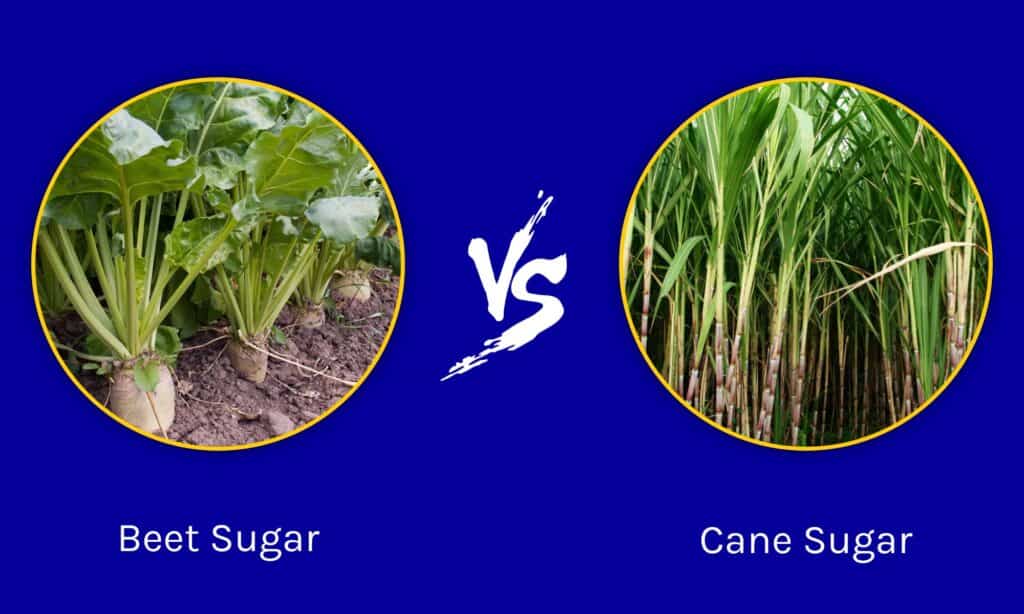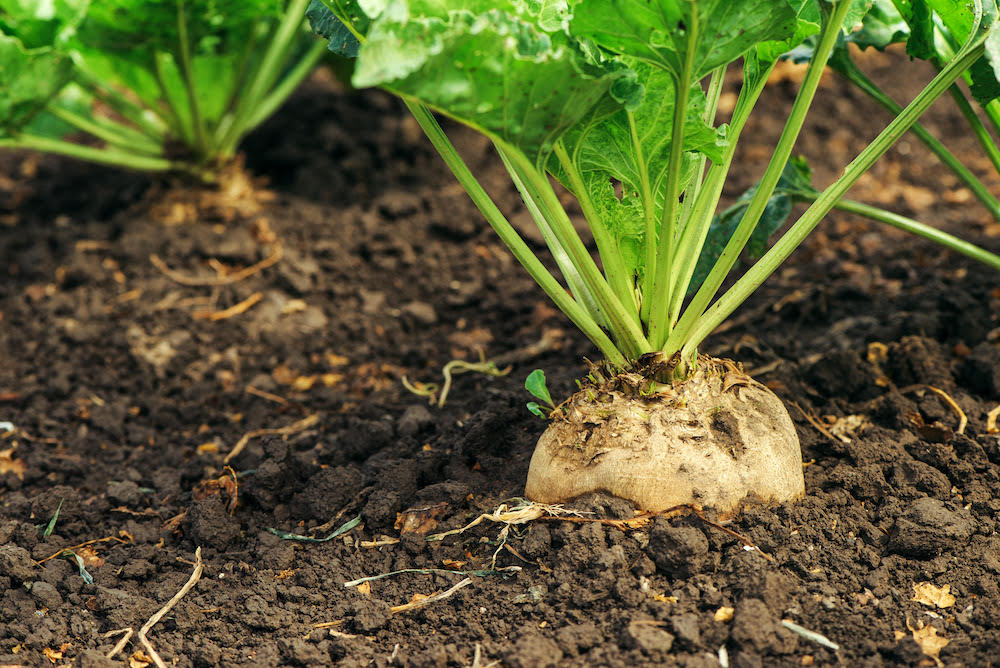What the research says about sugar beet vs sugar cane in drought tolerance
The Relevance of Sugar Beet Vs Sugar Cane: a Closer Consider Their Manufacturing Processes and Applications
The relevance of sugar beet and sugar cane extends beyond their duty as sources of sucrose. Each plant includes distinctive manufacturing procedures that affect their applications across numerous industries. While sugar beet supports not simply food production however also biofuels and fertilizers, sugar cane primarily serves the food field with important results. Recognizing these distinctions reveals exactly how each plant forms agricultural economic climates and sector practices internationally, prompting further exploration into their special contributions.

Summary of Sugar Beet and Sugar Cane
Sugar beet and sugar cane are 2 key resources of sucrose, each with distinct qualities and growing techniques. Sugar beet, an origin veggie, prospers in warm environments - Sugar beet vs sugar cane. It is cultivated mainly in the North Hemisphere and needs well-drained soil. The plant generally grows to a height of regarding 18 inches, with a white, fleshy origin consisting of concerning 15-20% sucrose. In comparison, sugar cane is an exotic lawn that flourishes in warm, humid problems. It can get to elevations of as much as 12 feet and contains tall, jointed stems that shop sucrose focus ranging from 10-15%. The cultivation of sugar cane is labor-intensive and often involves hand-operated harvesting. Both plants function as crucial farming products, offering resources for sugar production and various byproducts. Their farming methods significantly impact neighborhood economies and global sugar markets, making them integral to the farming landscape
Collecting Methods for Sugar Beet and Sugar Cane
Harvesting methods for sugar beet and sugar cane vary substantially because of the one-of-a-kind attributes of each crop. Sugar beet gathering generally uses specialized equipment referred to as beet harvesters, which efficiently root out the beets from the soil while decreasing damage. These makers utilize a collection of blades to cut the tops and raise the origins, ensuring that the beets continue to be intact for processing.In contrast, sugar cane harvesting commonly involves 2 key techniques: hand-operated cutting and mechanical harvesting. Hands-on harvesting, still common in some areas, requires workers to reduce the cane stalks by hand making use of machetes. This technique permits selective harvesting however is labor-intensive. Mechanical farmers have acquired popularity, utilizing revolving blades to cut and gather the stalks promptly. Both techniques intend to enhance yield and quality, with mechanical harvesting increasingly embraced to satisfy rising production demands efficiently.
Processing Approaches for Sugar Beet
After being gathered, sugar beetroots undertake a collection of processing steps to draw out sucrose properly. The initial step includes cleaning the beetroots to eliminate dirt and pollutants. Next off, the beetroots are sliced into thin strips called cossettes, which boosts the surface for removal. These cossettes are after that based on warm water extraction in a diffusion process, allowing sucrose to dissolve right into the water.Following extraction, the juice includes pollutants and is clarified using lime and warm to speed up solids. The cleared up juice is then focused via dissipation, eliminating excess water and enhancing sugar concentration. To crystallize the sucrose, the focused juice goes through additional evaporation and cooling, creating sugar crystals. Ultimately, these crystals are separated from the continuing to be syrup with centrifugation, dried, and packaged for distribution. This approach assures a high yield of sucrose while maintaining the quality of the last product.
Handling Methods for Sugar Cane
Handling sugar cane entails a series of steps made to remove sucrose successfully. The process begins with harvesting, where fully grown sugar cane is cut and transported to processing centers. Once at the mill, the cane undertakes cleaning to remove contaminations. The following step is squashing, where mechanical rollers essence juice from the coarse stalks.This juice is after that clarified making use of warmth and lime to eliminate suspended solids and impurities. Adhering to explanation, the juice is evaporated to focus the sugar web content, leading to a thick syrup. The syrup undertakes condensation, where sugar crystals form as the syrup cools down. These crystals are separated from the continuing to be molasses through centrifugation.Finally, the sugar is dried out and packaged for distribution. This comprehensive handling method guarantees that sugar cane yields a top notch product, suitable for different culinary and industrial applications, while making the most of the extraction of sucrose from the raw product.
Nutritional Differences In Between Sugar Beet and Sugar Cane
The comparison in between sugar beet and sugar cane expands beyond their processing approaches to encompass considerable dietary distinctions. Sugar beet includes not just sucrose but likewise a variety of nutrients, consisting of vitamin C, potassium, and magnesium. These nutrients contribute to its prospective health and wellness advantages, such as sustaining immune feature and keeping electrolyte equilibrium. In comparison, sugar cane mostly supplies sucrose with minimal degrees of necessary nutrients.Additionally, sugar beet has a greater fiber content, which can aid in digestion and promote satiety. The existence of anti-oxidants in sugar beet might also offer safety effects versus oxidative stress, an aspect connected to various persistent conditions. While both sources are primarily utilized for sugar manufacturing, the dietary accounts recommend that sugar beet may supply added wellness advantages compared to sugar cane. This distinction is essential for consumers seeking more than simply sugar in their diet plans.
Applications of Sugar Beet in Different Industries
A range of markets leverage sugar beet for its functional applications past sugar manufacturing. In the food market, sugar beet functions as a key active ingredient in producing various processed foods, consisting of sweets and baked items, because of its all-natural sweetness. Furthermore, the pulp derived from sugar beet is used as pet feed, providing a nutrient-rich source for livestock.In the biofuel industry, sugar beet is increasingly identified for its capacity in creating bioethanol, contributing to renewable resource services. The farming industry benefits Your Domain Name from sugar beet's results, which can be utilized as natural fertilizers, improving dirt wellness and fertility.Furthermore, sugar beet removes are utilized in pharmaceuticals and cosmetics, where they operate as natural sugar and humectants. These diverse applications highlight sugar beet's duty as a why not find out more beneficial resource in enhancing sustainability and innovation throughout numerous industries, enhancing its value in modern-day manufacturing practices.
Applications of Sugar Cane in Different Industries

Frequently Asked Questions
What Environmental Influences Are Connected With Sugar Beet and Sugar Cane Manufacturing?
The next environmental effects of sugar beet and sugar cane manufacturing consist of dirt destruction, water usage, pesticide application, and habitat interruption. These aspects add to environmental inequalities, increasing issues concerning sustainability in agricultural techniques connected with both plants.

Exactly How Do Sugar Beet and Sugar Cane Compare in Terms of Economic Practicality?
The economic stability of sugar beet and sugar cane varies based on elements like geographical area, manufacturing costs, and market demand - Sugar beet vs sugar cane. Both crops offer special benefits, affecting farmers' choices regarding cultivation and investment in different areas
What Are the Key Regions for Sugar Beet and Sugar Cane Farming?

Exactly How Does Climate Influence the Development of Sugar Beet and Sugar Cane?
Environment significantly impacts the development of sugar beet and sugar cane. Sugar beets prosper in cooler temperature levels, while sugar cane requires warm, exotic conditions. Sugar beet vs sugar cane. Both plants depend upon appropriate rains and sunlight for excellent development and yield
Exist Any Considerable Wellness Worries Associated With Consuming Sugar From These Resources?
Health problems related to sugar consumption include weight problems, diabetes mellitus, and cardiovascular disease. Both sugar beet and sugar cane-derived sugars can add to these issues, particularly when consumed in extreme amounts, no matter of their source.